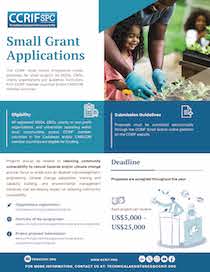Tropical Cyclone Iota was the thirty-first and most powerful tropical cyclone of the 2020 Atlantic Hurricane Season, overtaking in intensity the recent Hurricane Eta. Iota developed from a powerful tropical wave moving across the eastern Caribbean Sea, which evolved into a tropical depression on 13 November. Six hours later, it strengthened into a tropical storm while it was over the central Caribbean Sea, north of Colombia. In the following days Tropical Storm Iota intensified, becoming a major hurricane on 16 November.
On 2 November, Tropical Storm Eta rapidly intensified, becoming a major hurricane, and on 3 November it made landfall in Nicaragua as a category 4 Hurricane. Hurricane-force winds and catastrophic storm surge were experienced near the landfall point. While moving across Nicaragua, Eta rapidly lost intensity, being downgraded to a tropical storm on 4 November and to a tropical depression on 5 November, when it left the country heading for Honduras. During this period, tropical-storm-force winds extended over a large part of Nicaragua.
Tropical Cyclone Eta was the twenty-ninth and at the time the most powerful tropical cyclone of the 2020 Atlantic Hurricane Season.
The Bahamas North West was the only area within The Bahamas that was affected by wind speeds greater than 39 mph (62.7 km/h).
Tropical Cyclone Eta was the twenty-ninth and most powerful tropical cyclone of the 2020 Atlantic Hurricane Season. Eta developed from a powerful tropical wave moving across the eastern Caribbean Sea, which evolved into a tropical depression on 31 October. On 1 November, it strengthened into a tropical storm while it was over the central Caribbean Sea. On 2 November, Tropical Storm Eta rapidly intensified, becoming a major hurricane, and on 3 November it made landfall in Nicaragua as a category 4 hurricane.
Saint Lucia was under the influence of two tropical waves resulting in adverse weather conditions that occurred primarily between October 28 and November 1, 2020. During this period, Saint Lucia was affected by periods of rainfall and thunderstorm activity.
This event briefing describes the impact of rainfall on Saint Lucia, which was associated with a Covered Area Rainfall Event (CARE), starting on 29 October and ending on 3 November 2020.
A magnitude 5.3 earthquake occurred at 18:24:34 UTC on 7 October 2020, 56 km (34.8 mi) ESE of Road Town, British Virgin Islands; 78.1 km (48.5 mi) NE of Saint Croix, U.S. Virgin Islands and 81.7 km (50.8 mi) ESE of Charlotte Amalie, U.S. Virgin Islands. Estimates from the United States Geological Survey (USGS) located the epicentre of the event at 18.174°N, 64.178°W, and at a depth of 10.0 km (6.2 mi). The British Virgin Islands was the CCRIF member country closest to the epicentre.
Tropical Cyclone Delta was the twenty-sixth tropical cyclone and the ninth hurricane in the 2020 Atlantic Hurricane Season. On 5 October, it was upgraded from a tropical depression to a tropical storm while it was over the central Caribbean Sea, south of Jamaica. On 6 October, Tropical Storm Delta rapidly strengthened, becoming a category 4 hurricane at its closest proximity to the Cayman Islands (approximately 115 mi, 185 km, from Grand Cayman). Tropical-storm-force winds from extended over this country.
Dominica was under the influence of two tropical waves resulting in adverse weather conditions that occurred between September 29 and October 3, 2020. During this period, parts of Dominica were affected by showers and isolated thunderstorms.
This event briefing describes the impact of the rainfall on Dominica, which is associated with a Covered Area Rainfall Event (CARE), starting on 29 September and ending on 3 October 2020.
Tropical Cyclone Nana was the sixteenth tropical cyclone and the fifth hurricane in the 2020 Atlantic Hurricane Season. On 1 September, it was upgraded from a tropical depression to a tropical storm while it was over the central Caribbean Sea, south of Jamaica. On 3 September, Tropical Storm Nana strengthened, becoming a category 1 hurricane, just before making landfall on the coast of Belize, spreading hurricane-force winds over this country.
The interaction of a tropical wave, a broad area of low pressure and an upper level low pressure area produced periods of showers and thunderstorm activity over the southeastern Caribbean Sea, Trinidad and Tobago and the surrounding areas between August 30 and 31, 2020. Tobago was affected by persistent and intense rainfall between 0800UTC and 1700UTC on 31 August.
The Government of Trinidad and Tobago has two separate Excess Rainfall policies – one for Trinidad and one for Tobago.





